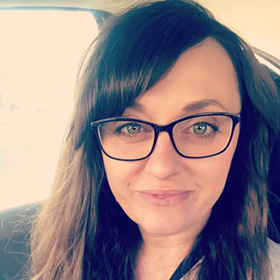Knowing where we will be tonight, tomorrow, and even next year is a privilege many of us take for granted. For children and youth in foster care, uncertainty about the future causes a great deal of stress and anxiety that affects them on countless levels.
Tammy Bradley, Foster Care Director at Children’s Hope Alliance, says that at her agency the work of removing that uncertainty and achieving permanency begins as soon as a child is placed. “We let our foster parents know from the beginning that for most children the goal is reunification. We expect them to actively participate in shared parenting.”
Children’s Hope Alliance staff coach foster families weekly on the importance of shared parenting and permanence. Bradley says they expect foster parents to learn about things like the child’s favorite foods and how to soothe them at night. “Familiar rituals and routines are important,” she explains. “They are part of permanence.”
Bradley’s agency uses something called the Teaching Family Model, an approach that helps youth build supportive relationships and social, relational, and interpersonal skills. “Children having strong relationships is key to positive outcomes,” Bradley says.
Her agency also provides training for their staff called “Disrupting Disruptions.” This course teaches them to spot and respond to warning signs so they can prevent unnecessary placement moves.
Children’s Hope Alliance also supports permanency by identifying natural supports for every youth it serves. Natural supports can be relatives, friends, teachers, or anyone else the child would benefit staying connected to. Relationships are part of permanence.
Like many child welfare professionals, Bradley has seen the harmful effects when children struggle to find permanency. “It can seem almost like a domino effect,” she says. “If there’s a sudden placement change, it can make it hard for them to find stability, which can lead to even more moves.” The effects of moving start to compound and negatively impact the young person’s well-being.
But Bradley has also seen many successes. As an example, she shares the story of a young man placed with their agency. From the start, his foster parents and birth mother were committed to shared parenting. They communicated honestly and without judgment.
“Then, during what had been a typical meeting, the mom asked the foster parents if they would adopt her son. She said she knew she was not in a place where she could provide the stability the foster parents could and wanted to give everyone her blessing to move forward with adoption.”
Bradley says this mom celebrates holidays with her son and his adoptive family and speaks with them frequently.
“There is no right way to achieve permanency,” Bradley says. “It can look like reunification, adoption, guardianship, or a variety of other ways.”
Everyone involved in North Carolina’s child welfare system wants children and youth in foster care to have the reassurance of permanence. We want them to know where they’ll be tonight, tomorrow, and next year.
Children’s Hope Alliance is a private child-placing agency that provides foster care and other services throughout NC. Visit https://www.childrenshopealliance.org.


